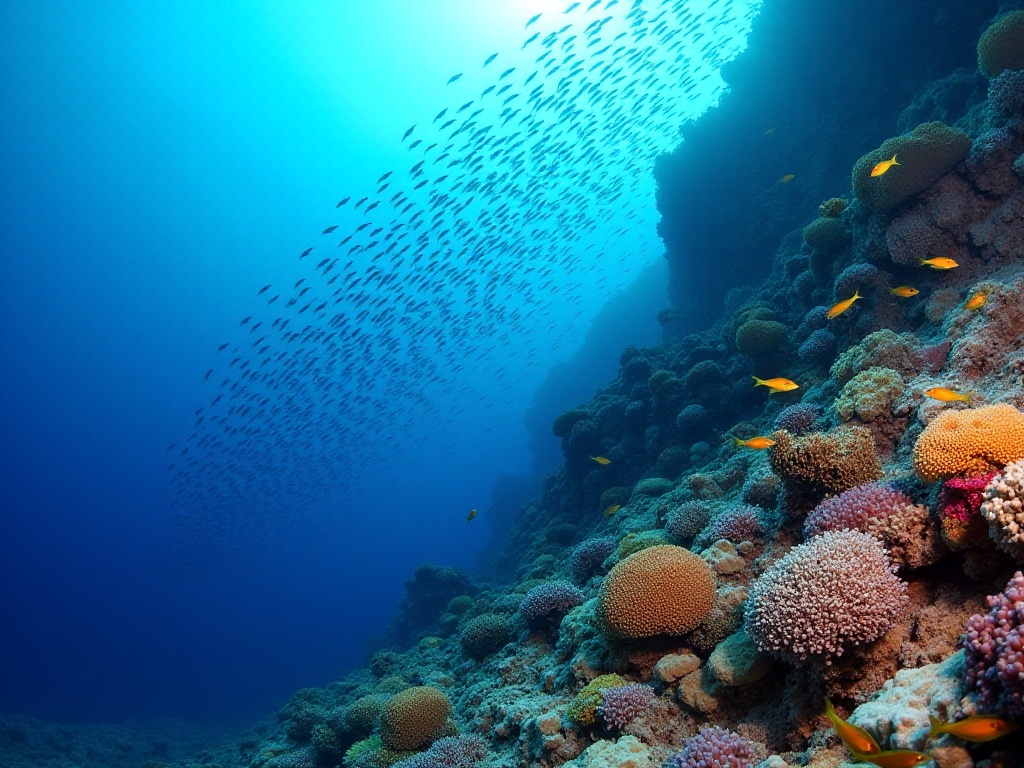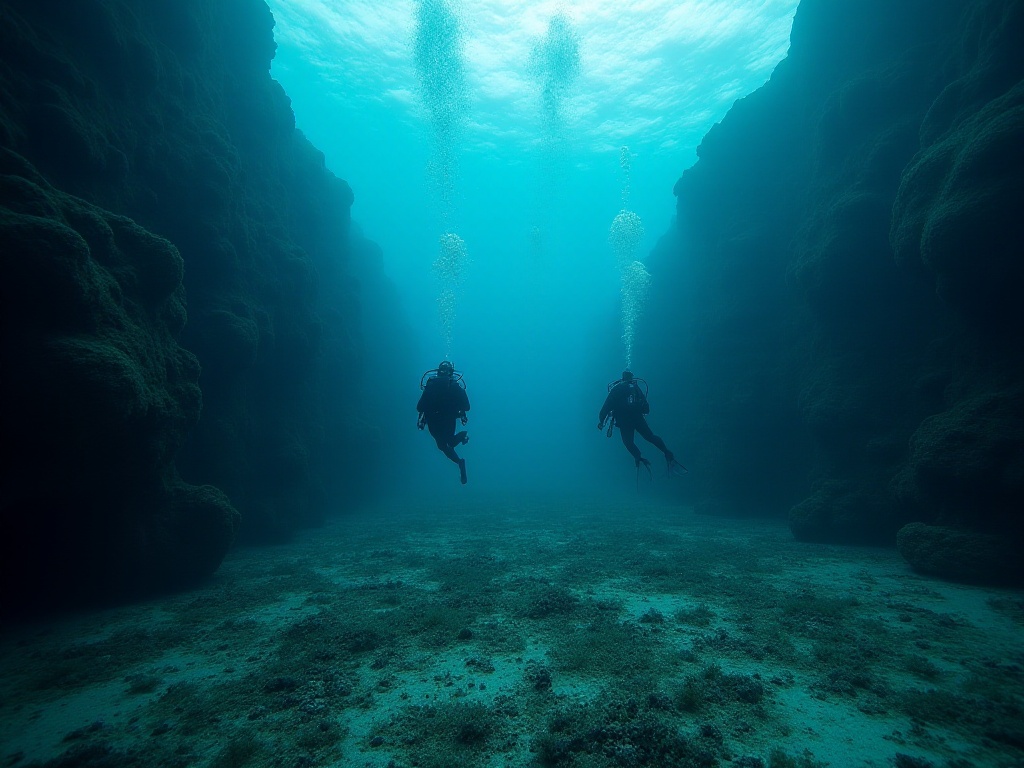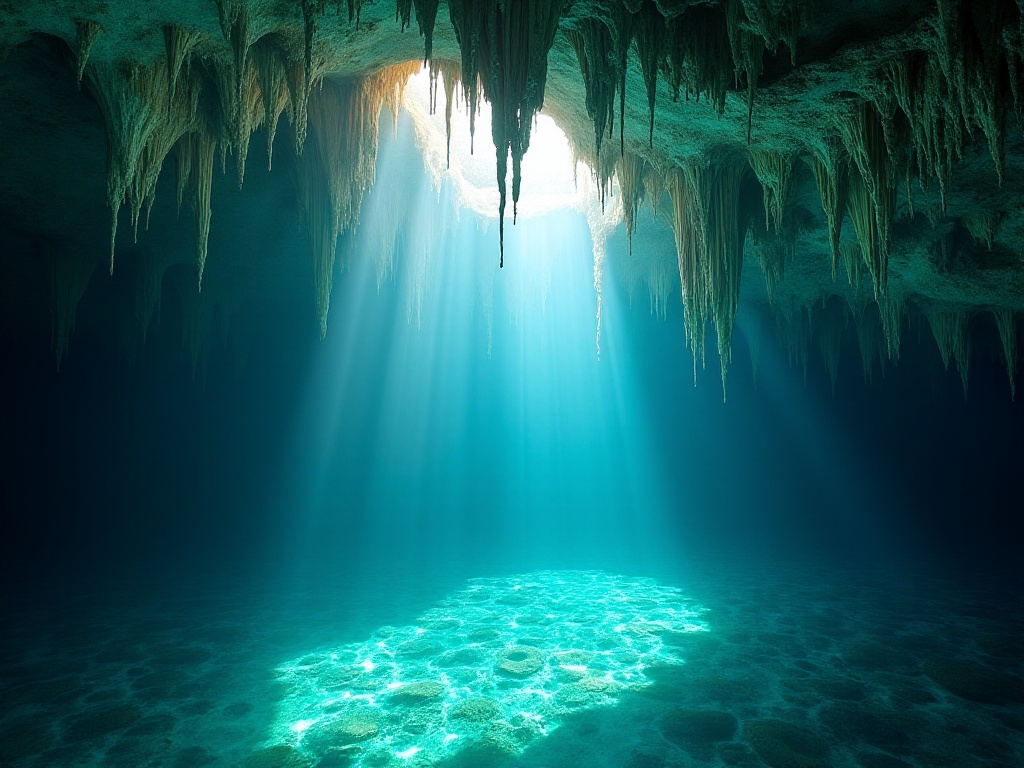Foreword Note
I remember my first dive was in Phuket, Thailand, when I was still a terrible swimmer like a duck on dry land. During pool equipment familiarization, I clumsily put on my mask backwards several times and accidentally swallowed water through the snorkel, making myself cough. The instructor looked at my fumbling with resignation, and I felt embarrassed myself. However, this somewhat awkward experience completely ignited my love for the underwater world.
When I first went underwater, I was so nervous my heart was racing and my palms were sweating. The instructor patiently taught me how to adjust my breathing rhythm, how to control buoyancy, and even showed me hands-on how to clear a flooded mask. Although we were just practicing in the pool, when I finally could breathe comfortably underwater, that sense of achievement was indescribable. From that moment, I knew I was destined to form an unbreakable bond with diving.
Great Barrier Reef Adventure
Speaking of diving destinations in the Asia-Pacific region, the Great Barrier Reef is absolutely every diver's holy grail. As the world's largest coral reef system, it's not only Australia's pride but also one of the most spectacular natural wonders on Earth. When I went diving there last year, I witnessed over 1,500 species of tropical fish swimming through coral formations, a spectacle I'll never forget.
I was completely stunned by what I saw during my first dive at the Great Barrier Reef. The water was crystal clear, with visibility easily exceeding 30 meters. The colorful corals were like underwater gardens, with hard corals shaped like carefully carved artworks and soft corals swaying gently with the current, as if dancing an elegant waltz.
The instructor told me that the Great Barrier Reef's coral coverage reaches 344,000 square kilometers, equivalent to 90% of Japan's total land area. In this vast underwater world, you might encounter great white sharks over 6 meters long, or come face to face with giant groupers weighing up to 180 kilograms.
My most unforgettable experience was a dive at Norman Reef. The water temperature was perfect that day, with excellent visibility. As we slowly descended to 15 meters, we suddenly saw a group of manta rays gliding gracefully overhead, their wingspan extending over 3 meters, like giant underwater bats. Then, a grey reef shark nearly 2 meters long swam past us. Although I knew it posed no threat to humans, the thrill of such a close encounter was exhilarating.
Every dive at the Great Barrier Reef is a new adventure. Sometimes you encounter schools of clownfish playing among anemones, sometimes you see large green turtles foraging leisurely, and if you're lucky, you might even meet a whale shark over 10 meters long. Most impressive was when we found a giant sunfish near a coral wall - it was almost as big as a small car, floating serenely in the water, completely unbothered by our human presence.
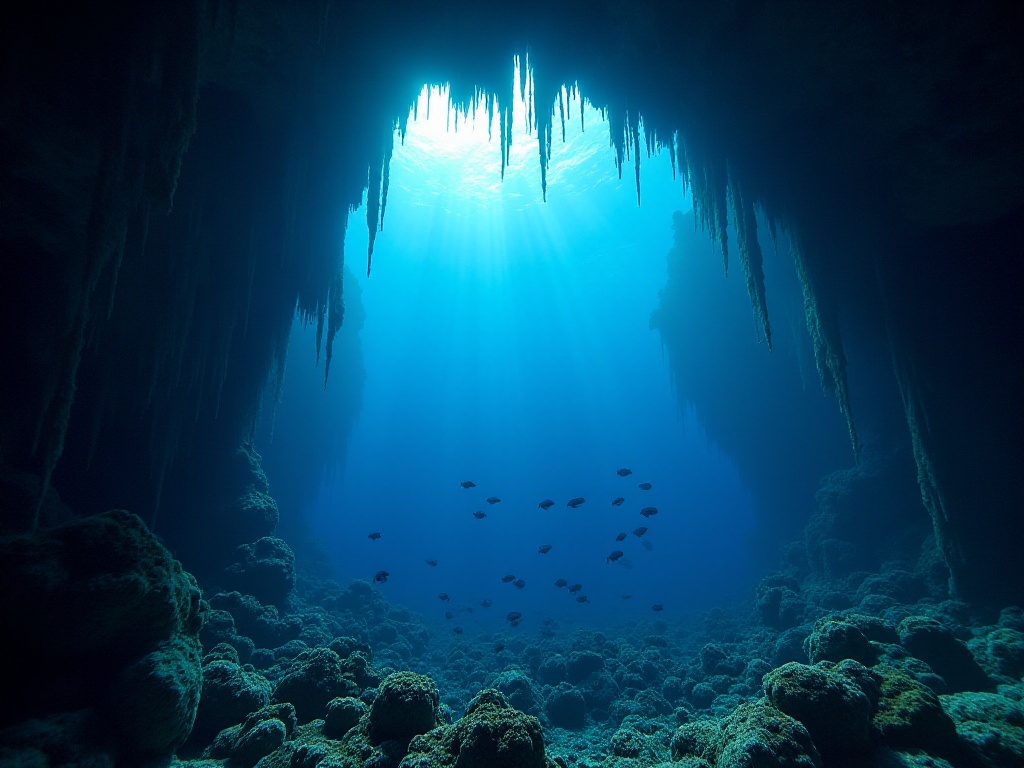
Indonesian Exploration
When it comes to Indonesian diving spots, Komodo National Park and Raja Ampat are two absolute jewels. Raja Ampat, known as the "Land of Four Kings," gets its name from the four main islands in the area. It's literally a living marine encyclopedia, with over 1,427 recorded fish species, representing 75% of all marine fish species globally. The biodiversity behind this number is almost beyond imagination.
At the Batu Bolong dive site in Komodo National Park, I once saw over 50 different marine species in a single dive. This site has an interesting topography - it's a small island extending from the surface down to 40 meters deep. Located at the intersection of two straits, the currents here are strong, but these currents bring rich plankton that attracts countless marine creatures.
I remember once diving at Batu Bolong, shortly after entering the water, we saw a group of batfish swim by. Their formation was as orderly as if they had been specially trained, their silver scales glittering in the sunlight. Suddenly, a school of jack fish approached from afar, forming a massive fish vortex - it was spectacular. Most amazingly, at this site, you might even see giant trevally over 3 meters long. Although they look fierce, they don't actually pose a threat to divers.
Raja Ampat's underwater landscape is even more breathtaking. It hosts 537 coral species, representing over 75% of global coral species. In the Misool area, I once dived at a site locals call "Magic Mountain." The soft coral coverage here reaches 95%, displaying dreamlike purple and pink hues under the sunlight. Most delightful was frequently seeing tiny pygmy seahorses, only a few millimeters long but displaying rainbow colors.
In Raja Ampat, you never know what you'll see next. It might be a group of manta rays over 2 meters wide gliding gracefully overhead, a uniquely patterned moray eel peeping out from coral crevices, or even dolphins playing in the distance. My most unforgettable experience was seeing a sea dragon at a site called "Blue Heaven." These amazing creatures completely changed my understanding of fish - their body structure is like something from a fairy tale, elegantly floating among seaweed, occasionally using their long snouts to feed on plankton.
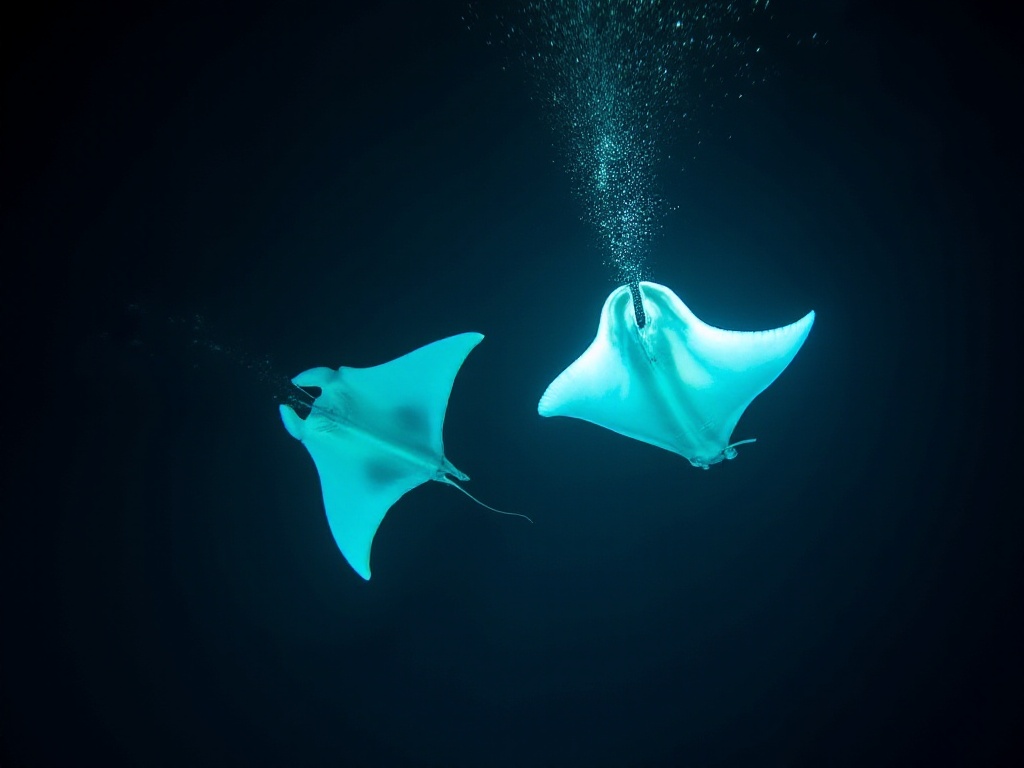
Philippine Highlights
In the Philippines, Apo Island and Dumaguete are absolutely must-visit diving sanctuaries. Apo Island's turtle sanctuary attracts over 50,000 diving enthusiasts annually, and the green turtle population here has increased by 300% over the past decade. These numbers reflect years of tireless efforts in marine ecological conservation by the Philippine government and local communities.
During my first dive at Apo Island, I was amazed by the turtles here. The water was crystal clear that day, with visibility over 25 meters. Shortly after descending, we saw three large green turtles foraging leisurely among the coral reefs. They seemed completely unbothered by us divers, continuing to eat and swim as they pleased. Most touching was seeing one turtle with several cleaner fish attached to its shell, demonstrating a perfect symbiotic relationship.
In Dumaguete, you can experience a completely different type of diving. Famous for muck diving, while lacking colorful corals and large schools of fish, you can see many rare macro creatures. I remember once when our dive guide took us to search for the legendary blue-ringed octopus. Although small in size, it's one of the deadliest creatures in the ocean. After nearly an hour of patient searching, we finally found one among a pile of rubble. When it sensed our presence, its blue rings became extraordinarily visible - a moment both beautiful and awe-inspiring.
At a deep dive site in Apo Island, I witnessed a rare fish storm. It was a massive school of jack fish forming a huge silver vortex in the deep blue water. When you're in the center of the school, it feels like the whole world is spinning. Most amazing was how, despite being so dense they almost blocked out the sun, they perfectly avoided every diver, demonstrating remarkable collective intelligence.
Malaysian Diving Paradise
Sipadan Island was described by famous ocean explorer Jacques Cousteau as "an untouched piece of art" - this description is not exaggerated at all. To protect the marine ecosystem here, the Malaysian government only allows 120 divers per day, and reservations must be made months in advance. It's this strict management system that has preserved Sipadan's pristine marine environment.
At the famous Barracuda Point, I was once surrounded by tens of thousands of barracuda - that feeling of being in the midst of a silver tornado is unforgettable. The visibility was particularly good that day, and when we descended to about 25 meters, we suddenly heard our guide's signal. Looking up, dense schools of barracuda were swimming in from all directions, forming a massive silver vortex. Most amazing was how these barracuda seemed to have some mysterious understanding, able to change direction instantly without colliding.
Another specialty of Sipadan is its turtles. This is one of the areas with the highest turtle density globally - seeing over a dozen turtles in one dive is not uncommon. At a site called "Turtle Cave," I once saw a huge hawksbill turtle resting among corals. When we slowly approached, it just lazily looked up at us once before continuing its nap. Such close encounters with wild sea turtles are rare elsewhere.
Besides turtles and barracuda, Sipadan is also famous for its shark population. At "South Point," we often see grey reef sharks and whitetip reef sharks patrolling in the deep blue water. Although initially nervous, you quickly realize these "ocean hunters" aren't actually interested in humans. Most impressive was during a sunset dive when we encountered a group of blacktip reef sharks hunting. Their speed and agility while chasing small fish demonstrated nature's wonders.
Thailand's Underwater Paradise
Richelieu Rock in the Similan Islands is absolutely a must-do dive in Thailand. What makes this site special is that it's a massive rock pillar rising from the deep sea, surrounded by a rich marine ecosystem. It's a whale shark paradise - statistics show that during peak season from November to April, the chance of encountering whale sharks is 75%.
I'll never forget the day I met a whale shark at Richelieu Rock. The sea conditions were perfect that day, with comfortable water temperature and visibility over 30 meters. When we reached about 18 meters deep, we suddenly saw a huge silhouette in the blue water. It was a whale shark over 12 meters long, swimming elegantly toward us with its spot pattern clearly visible. Most amazing was how this ocean giant showed great curiosity about us, even circling around us several times, giving us plenty of time to admire its graceful form.
Besides whale sharks, Richelieu Rock is also famous for its macro life. Among the corals and anemones, you can find various unique creatures like tiny pygmy seahorses just a few centimeters long, colorful nudibranchs, and even mysterious snake eels. I remember once our guide found a pair of clownfish guarding their eggs in an anemone. It was a touching scene - the two fish taking turns fanning their fins to ensure their eggs got enough oxygen.
At other Similan Islands dive sites, you can experience various diving pleasures. At "Elephant Head Rock," you can explore interesting caves and canyons. At "Three Rocks," you often see groups of manta rays gliding gracefully overhead. Most memorable was at "East of Eden" where we encountered a group of tuna hunting. Their speed was dazzling, demonstrating amazing teamwork while chasing small fish.
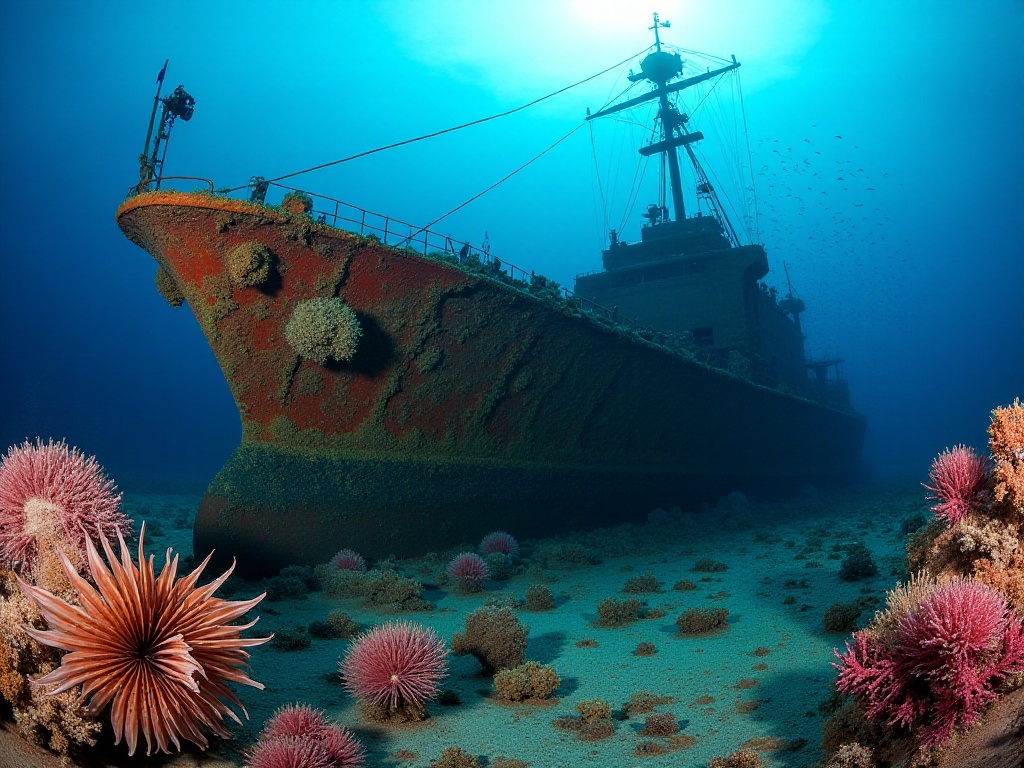
Pacific Treasures
Fiji's Rainbow Reef isn't called that for nothing. With over 230 species of soft coral, they display dazzling color changes under sunlight. When the tide comes in, these soft corals fully extend, turning the underwater world into a colorful fairy tale.
The most amazing thing about diving at Rainbow Reef is the color changes. As the sunlight angle changes, the coral colors subtly shift from deep purple to bright pink, from sky blue to indigo - it's like an underwater light show. I remember one morning dive when the first rays of sunlight penetrated the surface, the entire reef seemed to light up - that dreamlike scene is unforgettable.
Palau's Blue Corner has been rated by National Geographic as the "World's Top Diving Spot" - this rating is not exaggerated at all. The shark population here is so abundant that you can see 30-50 sharks on average per dive. Most amazing is how docile the sharks seem here - they coexist peacefully with divers and sometimes even curiously approach to "say hello."
My most memorable experience at Blue Corner was an encounter with a group of grey reef sharks. The current was a bit strong that day, but the water was clear. When we descended to about 25 meters, we suddenly found ourselves surrounded by at least 40 grey reef sharks. These "ocean predators" swam elegantly around us, showing off their streamlined bodies and powerful tail fins. Although we knew they meant no harm to humans, being surrounded by predators still made our hearts race.
In Palau, besides sharks, you can see many other large marine creatures. Like huge Spanish mackerel, schools of tuna, and even giant manta rays over 4 meters wide. Most special is the famous Jellyfish Lake, home to millions of stingless jellyfish. Although not a traditional dive site, snorkeling here is a unique experience.
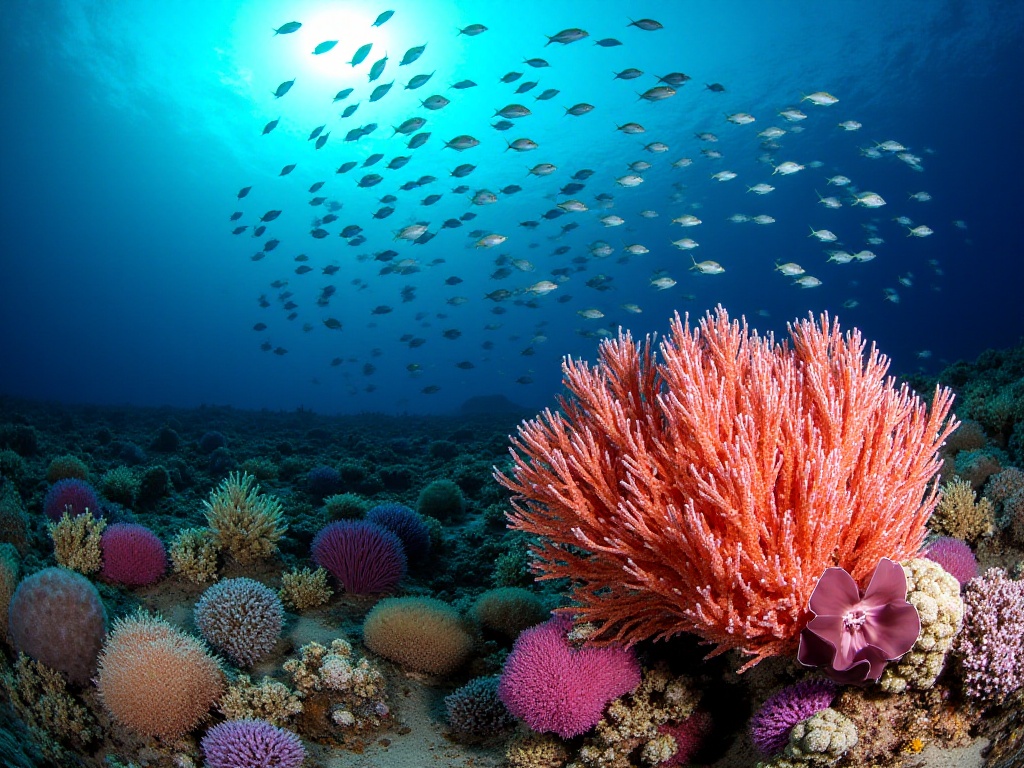
Concluding Thoughts
From novice to diving enthusiast, along this journey, I've witnessed many underwater miracles. Each dive is like opening a new storybook, full of surprises and unknowns. In the vast waters of the Asia-Pacific region, each dive site has its unique charm, waiting for us to explore.
Looking back on these years of diving experiences, my biggest realization is
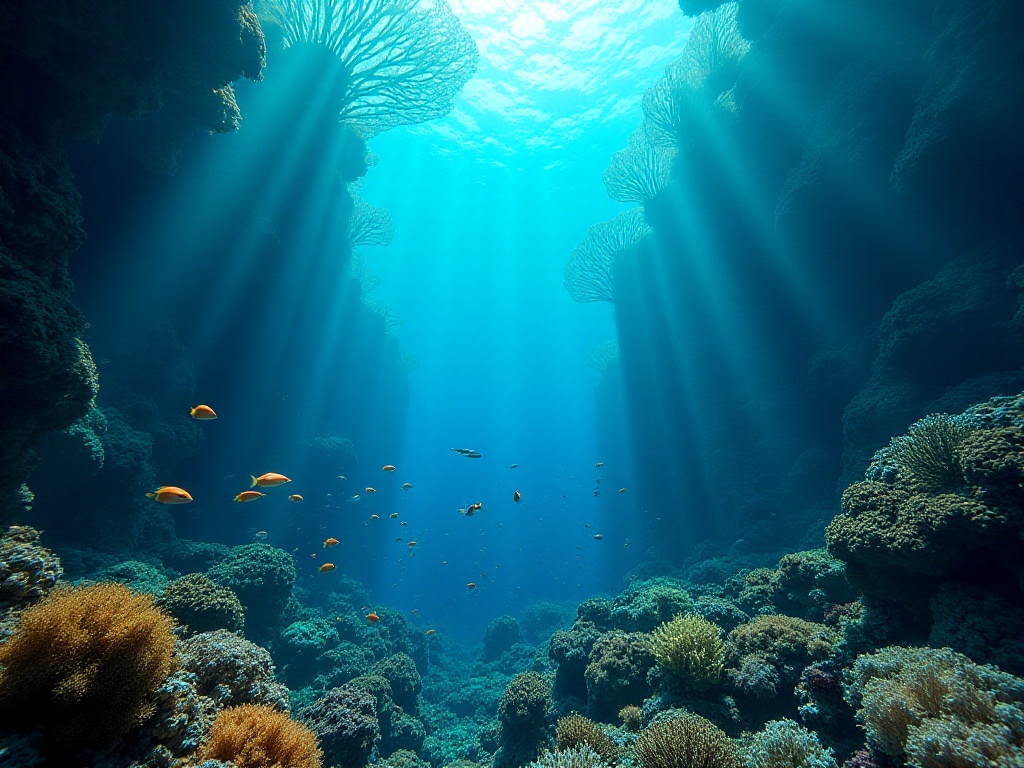
前言小记
I remember my first dive was in Phuket, Thailand, when I was still a terrible swimmer. As someone who had been afraid of water since childhood, my first time going underwater with a scuba tank was a disaster. During pool training, I was so nervous I couldn't even manage basic breathing control, making my instructor shake his head in frustration. Every time I practiced air exchange, I would choke on water, making a mess of myself. But the instructor was extremely patient, teaching me proper breathing methods and underwater hand signals over and over again.
After three days of pool training, I finally managed to barely complete the basic moves. When I first went into the sea, I was so nervous my palms were sweating, and I held onto the instructor's hand tightly. But as I slowly adapted to the underwater environment and saw clownfish swimming by, that sense of novelty and excitement suddenly overcame my fear. From that moment on, I fell deeply in love with this blue world.

Great Barrier Reef Adventure
When it comes to diving destinations in the Asia-Pacific region, the Great Barrier Reef is absolutely the king of kings. I'll never forget my first boat trip out of Cairns, bouncing on the speedboat for nearly two hours over the azure sea before reaching the outer reef. Looking down from the boat, you could vaguely see colorful corals through the transparent water, like a vibrant watercolor painting.
Before going underwater, I felt both nervous and excited. The instructor told us that the Great Barrier Reef's ecosystem is extremely rich, with not only over 1,500 species of tropical fish but also more than 400 species of hard corals, soft corals, and sponges. When I descended underwater, the scene before me left me completely stunned: schools of butterfly fish darting through coral thickets, massive Napoleon wrasse swimming leisurely past, and in the distance, a group of barracuda glistening in the sunlight.
At Norman Reef, we encountered a reef shark over three meters long. Initially, everyone was startled, but we quickly realized it had absolutely no interest in us, just swimming by lazily. The instructor explained that sharks on the Great Barrier Reef are usually gentle and won't pose any danger as long as we don't disturb them.
Most stunning was the night dive at Alexander Reef. When all light came from our dive lights, the seafloor presented a completely different face. Fluorescent corals emitted a soft glow in the darkness, and nocturnal creatures came out to forage. We even saw a huge green turtle resting among the corals, its shell covered with a thin layer of fluorescent algae, looking particularly mysterious in the darkness.
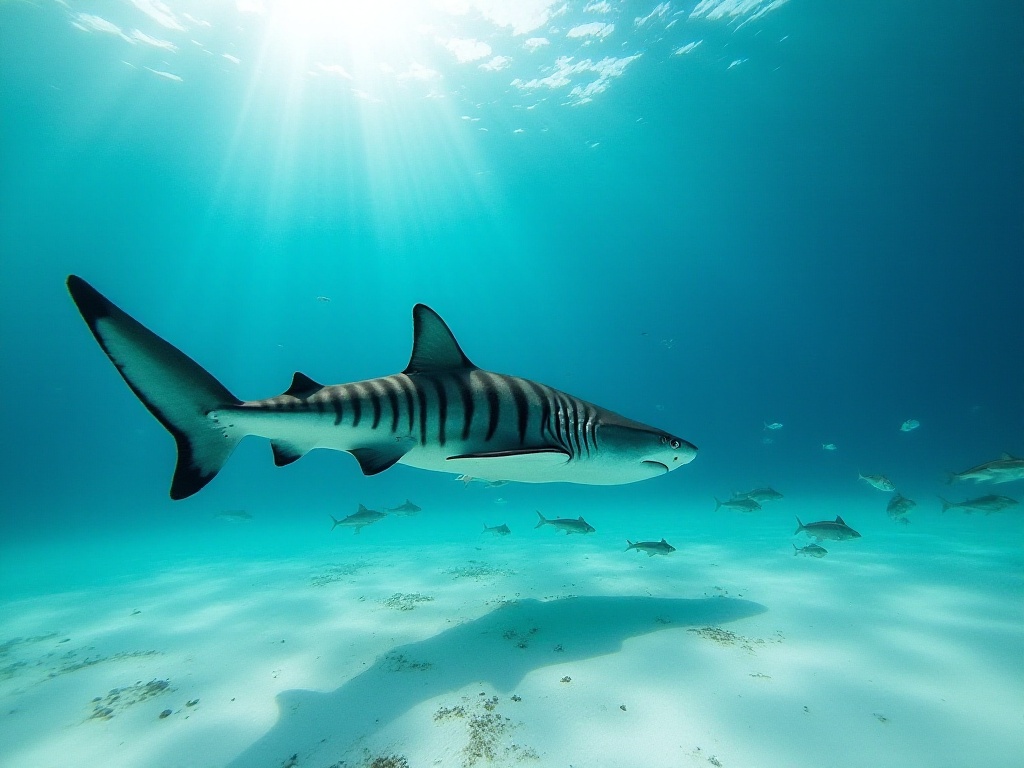
Indonesian Exploration
When talking about diving in Indonesia, many people's first thought is Bali. But true diving enthusiasts know that Komodo National Park and Raja Ampat are the ultimate destinations. I spent two full weeks in Komodo, discovering new surprises every day.
Batu Bolong is one of Komodo's most famous dive sites, with strong currents suitable for experienced divers. I remember one early morning dive when we encountered a group of manta rays just after entering the water. The scene was incredible: at least twenty manta rays circling above our heads, their elegant "flying" posture making us hold our breath in awe.
In Komodo, you never know what you'll encounter next. It might be a white-tip shark over three meters long, schools of jack fish, or a massive ocean sunfish. The biodiversity here is so rich that even experienced diving instructors marvel at it.
Raja Ampat presents another spectacle entirely. It's one of the most biodiverse marine areas globally, home to 1,427 fish species and over 75% of the world's coral species. Diving here is like visiting a massive underwater museum.
Most memorable was the experience at Micro Reef. The number of small marine creatures here is astonishing, with all sorts of unique shrimp, seahorses, and nudibranchs. Here I saw walking fish for the first time, watching them


